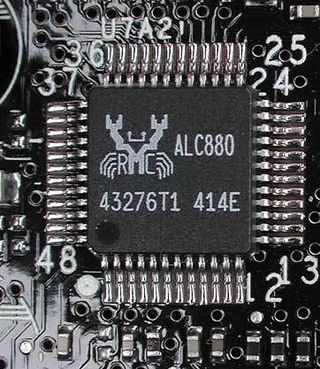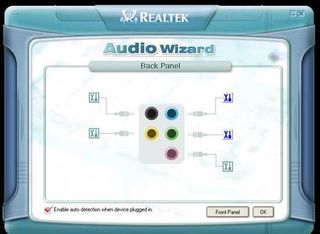Intel's HD Audio PC Sound Ambitions
First Realities
For our initial encounter with HD Audio, we used an Intel D925XCV motherboard. It was fitted with a Realtek ALC880 codec that supports 7.1 output with DA 24-bit converters operating at up to 192 kHz. On the other hand, one restriction - in comparison with top-of-the-range cards - is immediately obvious, namely, that the AD converters only offer 20-bit sampling. In fact, the ALC880 is designed for features other than top-of-the-range audio, since it enables the processing of sound from a network of microphones, for conventions and conferencing applications, for example.
Acoustic feedback is eliminated, direction is managed and there is noise reduction, all of which can be implemented simultaneously. So this is a system that is explicitly aimed at the business and consumer markets, rather than at musicians or enthusiasts. In the same spirit, Realtek has announced the incorporation of a proprietary solution for content protection, in other words, management of reproduction rights and protection against piracy. So that should be good news for some...

Now for some really good news. ALC880 support S/PDIF 32-bit digital input and output up to 96 kHz, which will be very satisfactory in practice for this type of product. Its relatively new features include automatic detection of any equipment connected to an input or output. The change in the impedance loading is analyzed by the circuit that then automatically configures itself on the basis of this data. In practice, this function is handled by the software supplied by Realtek that lets you choose the type of equipment connected. In principle, the inputs and outputs can be reconfigured at will. This means that a loudspeaker output can be turned into a mike input if you decide to do that, although in the current version, this function does not yet seem to be truly operational.

Realtek software displays the connection panel and shows you which jacks are plugged in.
Stay On the Cutting Edge: Get the Tom's Hardware Newsletter
Get Tom's Hardware's best news and in-depth reviews, straight to your inbox.
Current page: First Realities
Prev Page Introduction, Continued Next Page First Realities, ContinuedMost Popular

